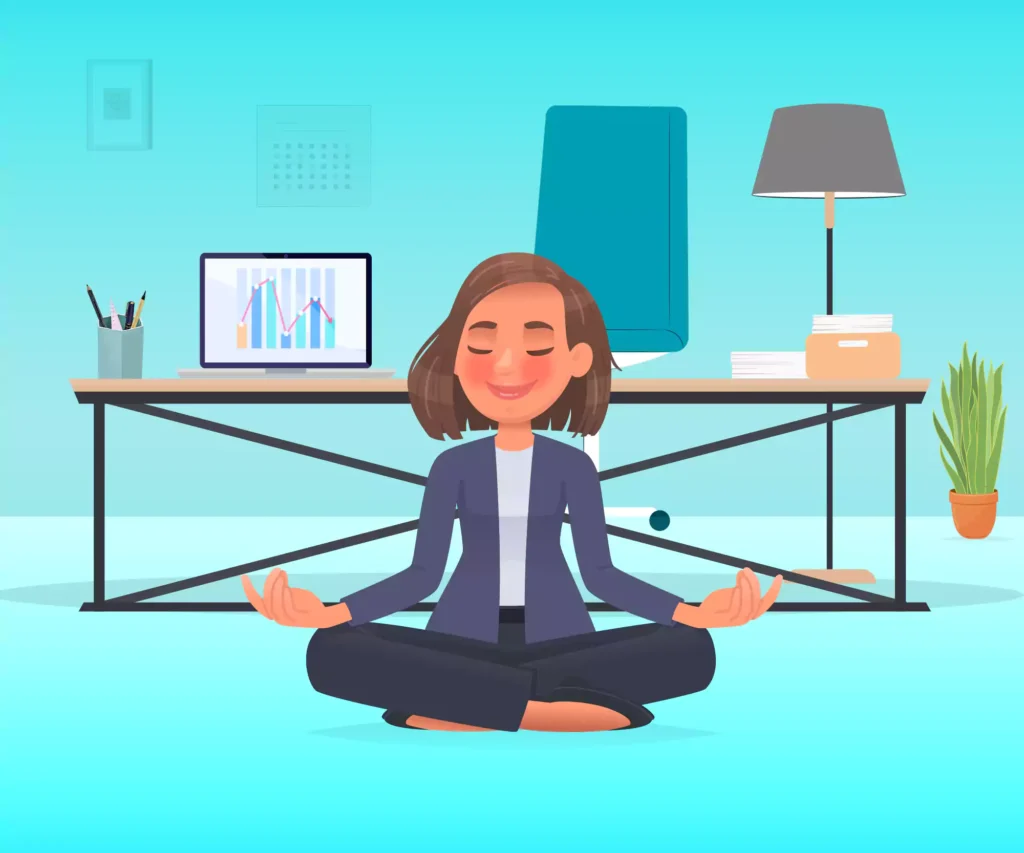The experience of a panic attack or a vicious bout of anxiety can be incredibly unpleasant. You feel powerless, out of control, and extremely overwhelmed. More often than not, the fear of a repeat attack makes you more anxious. Finding a way to remind yourself of the present is crucial in such situations, and the fastest way to do so is by using grounding techniques. Let’s explore what they are.
What are grounding techniques?
When you are extremely anxious or experiencing a panic attack, your mind goes to an imaginary place in the future where you see all kinds of unfavourable outcomes. These experiences pull you away from your immediate present and your focus is exclusively on the negative physical sensations. Thoughts of ‘what will happen?’ consume you. At that moment, your mind and body react to stimuli that are not physically present. In order to reassess the situation, you need to connect with your physical surroundings. Grounding techniques help you do that. These techniques allow you to establish a balance in the midst of intense emotions to determine if the feelings or thoughts have an immediate cause.
What is the mechanism behind grounding techniques?
If you have ever told someone, “Pinch me! I must be in a dream!”, you already understand the principle of grounding techniques. These techniques use physical sensations to bring you back to your surroundings.
Grounding techniques use all five senses. But, first you should use breathing techniques to slow down your breathing and lower your heart rate. Then, identify the following:

Take a few seconds to focus on each sensation. Then, name them aloud or silently in your mind. For example, if you’re sitting outdoors, you can tell yourself, “I can see a tree”. As you focus on the tree for a few seconds, note its characteristics (height, shape of leaves, etc.). Then focus on the next object— “I can see a parking sign.” Repeat the observation. Focus on the sight, sound, smell, texture, or taste of each item that you are sensing consciously. The different textures of objects are instrumental in this process. Make the physical sensation more intense by using contrasting textures: rough, smooth, cold, warm, hard, soft, etc. You should feel more grounded in your immediate environment after completing this exercise.
When using this grounding technique, use the mnemonic 5 – 4 – 3 – 2 – 1 to help you remember what you should be doing: focusing on these many objects. There is no specific order of senses that you must follow. For example, according to where you are, you can focus on five things you can see or five things you can hear and modify the rest of the list accordingly. If you are in a cafe, you can even focus on five things you can taste and four things you can smell, making it just one thing you touch. The essential part is to take in your surroundings using all of your senses.
What to do after you’ve calmed down
Once grounding techniques have helped you calm down, you need to assess your immediate surroundings. Can you identify anything that is immediately stressful in the current situation? If not, try to understand what was worrying you. In case this process makes you anxious again, you can repeat the grounding techniques. Then, try to analyse the issue further using the questions in the flowchart provided below.

As you may have noticed, these questions help you to be self-aware and stress the importance of a support group. Having a trusty support group of friends, family, colleagues or a therapist can make a huge difference. On the other hand, should you choose to deal with the impact on your own (as asked in Q3 in the image above), here are some coping strategies that can help you:
- Deep breathing, a quick round of stretches, or some light aerobic exercises can reduce the impact of your distress.
- Have a list of distractions for yourself. The list could include activities like watching an amusing video, listening to music, reading a book, or doing anything else that will give you a pleasant diversion.
Practice, perfect, personalise
For grounding techniques to become truly effective, practice is important. When you practise them regularly, you can easily regain control during an episode of anxiety or stress. Thus, your self-confidence to manage them better next time also increases.
However, if you experience frequent episodes where you need to use grounding techniques, it is best to consult a therapist. With the help of a therapist, you can identify the root causes behind the intense emotions and reactions. With their help, you can develop specific, personalised techniques that are easy to use and effective for you.

